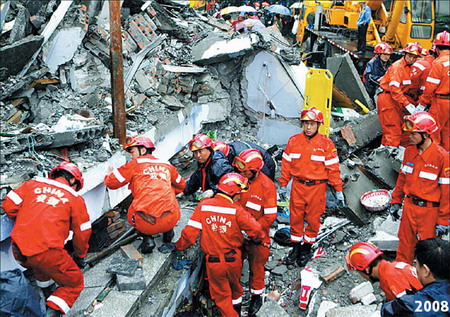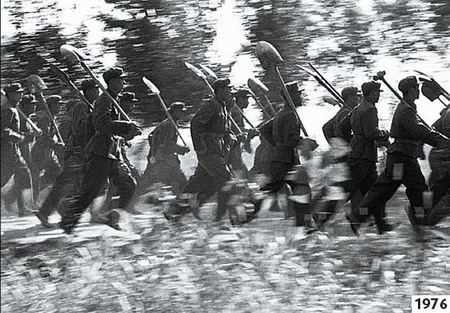|
|
 |
|
30th Anniversary Celebrations
Economic Development
New Rural Reform Efforts
Political System Reform
Changing Lifestyle
In Foreigners' Eyes
Commentary
Enterprise Stories
Newsmakers
Photo Gallery
Video and Audio
Wang Wenlan Gallery
Slideshow
Key Meetings
Key Reform Theories
Development Blueprint
Li Xing:
Teachers like Li need our support Alexis Hooi:
Going green in tough times Hong Liang:
Bold plan best option for economy PLA to the rescue
By You Nuo (China Daily)
Updated: 2008-05-19 17:15
  The recent killer earthquake in Sichuan province quite naturally reminds people of a similar one that struck Tangshan, an eastern industrial city, in 1976, two years before China's start of its market-oriented reform. The two photographs in this column compare the scenes of rescue teams hurrying to the epicenters - again the black-and-white one about the past and the color one about now. The rescue operation of 32 years ago was undertaken almost entirely by the People's Liberation Army (PLA).
Little modern machinery was available in a country where many things were in short supply, when its gross domestic product was around 360 billion yuan ($52.49 billion) (1978), only less than 2 percent of the 21 trillion yuan in 2006. This might have been one of the reasons why Tangshan, a city built on flat land, reported much more deaths (close to a quarter million) than the mountainous Sichuan, where the tremor caused many bad landslides and damaged practically all roads. While from the scene of the Sichuan earthquake, people can see more professionally-equipped rescuers and much more heavy machinery, as seen in the background. The photograph was filed in by Xu Jinxing, a younger journalist with the China Daily, from Dujiangyan, a city badly affected by the disaster. Of course, the PLA is still the main actor on the rescue scene, as it is always expected to be. They have not abandoned simple tools, while they are also using sophisticated technologies, including chartered civilian airliners and helicopter fleets. From television reports running almost around clock, people can see this as one of the Chinese army's largest emergency mobilization efforts. As a large nation, China faces many disasters and accidents every year. It is just as an ancient saying goes: "Being large is difficult just as well." But people grow into a nation by spending up to common disasters and threats. Through helping one another, they build stronger economic and cultural bounds. The campaign to donate blood and financial aid for the disaster-hit communities is now spreading all over China, showing all the more of the resilience of a rapidly developing economy.
 
 |